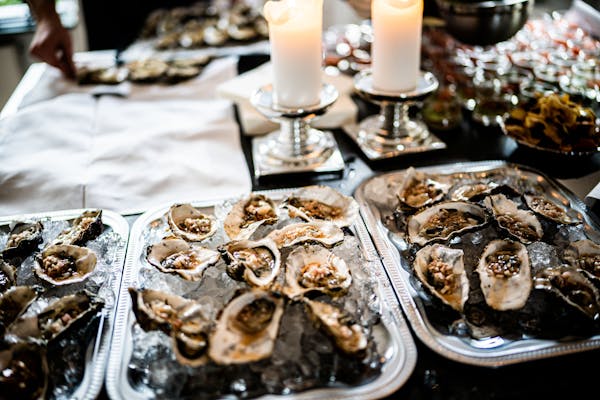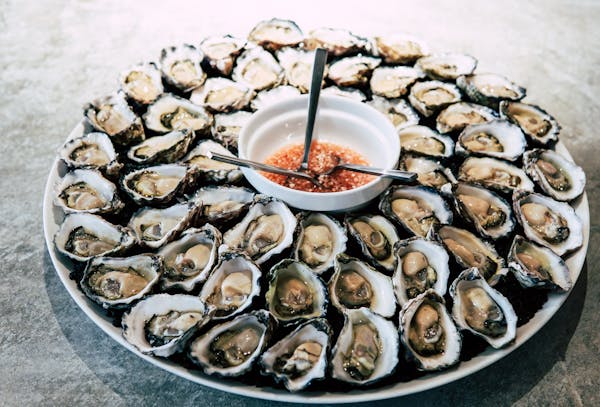Embark on a culinary and educational journey into the heart of seafood connoisseurship with our deep dive into a question that has tickled the palates and puzzled the minds of shellfish aficionados and professional chefs alike: How many oysters in a bushel? This seemingly simple inquiry opens the door to a fascinating world of maritime tradition, practical knowledge, and the sustainable enjoyment of one of the ocean’s most cherished offerings.
For anyone invested in the seafood industry, hosting a large event, or simply aiming to satisfy their curiosity, grasping this fundamental measure can make the difference between a bountiful spread and a lackluster gathering. Moreover, with sustainability at the forefront of our discourse, understanding yield can lead to more environmentally conscious choices.
Contents
How Many Oysters In A Bushel?

Based on the information gathered from various sources, the number of oysters in a bushel can vary depending on the size and type of oysters. Typically, a bushel of oysters in the US contains around 100 oysters, while in some cases, it can have 25 oysters per peck. The size of the oysters, whether shucked or in their shells, plays a significant role in determining the quantity in a bushel. Shucked oysters are categorized based on the number of individual oysters within a specific volume, with counts having 160 oysters or less per gallon, extra selects ranging from 161 to 2010 oysters per gallon, selects with 210 to 300 oysters per gallon, standards with 300 to 500 oysters per gallon, and very small sizes exceeding 500 oysters per gallon.
On average, a bushel of oysters weighing between 45-60 pounds can feed between four to six people, although this can vary based on individual preferences and the amount of other food being served. It is recommended to order around six oysters per person for appetizers, taking into account factors like guests’ preferences and the overall menu.
Ordering Guidelines
See more : Can You Cook Sausages From Frozen? | Tips and Tricks
Here are some tips for ordering oysters for your event:
- For a cocktail-style event with oysters as passing hors d’oeuvres, order 2-3 dozen oysters per person.
- For a sit-down dinner with oysters as an appetizer course, allow 1 dozen oysters per person.
- For an oyster bar or raw bar station, estimate 3-5 dozen per person for a 1-2 hour duration.
- For an all-you-can-eat oyster roast, plan for 8-12 dozen oysters per person.
- Adjust amounts based on whether oysters will be the main highlight or one of several foods offered.
- Plan for more oysters if dealing with oyster aficionados who will consume greater quantities.
A guide to different oyster types
- Atlantic oysters – Briny, crisp, mineral flavors
- Pacific oysters – Sweet, meaty, metallic flavors
- European Flat oysters – Intense brininess, coppery finish
- Olympia oysters – Rich, earthy, mushroom notes
- Kumamoto oysters – Sweet, mild, slightly fruity
- Gulf oysters – Smooth, delicate, nutty flavors
The unique merroir (marine terroir) of each region impacts the oyster’s taste:
- Salinity – Saltier water = saltier oysters
- Algae – Provides sweetness and marine flavors
- Minerals – Contribute to metallic, briny tastes
- Temperature – Colder water makes firmer, more briny oysters.
Pairing Oysters with Drinks
Classic pairings
- Champagne – Bubbles and acidity cut through richness
- Sauvignon Blanc – Crisp, herbaceous qualities
- Dry Riesling – Acidity contrasts brininess
- Irish Stout – Roasted notes complement oysters
- Irish Whiskey – Briny oysters echo briny whiskey
Unique pairings
- Dry rosé – Fruity flavors accentuate sweetness
- Wheat beer – Soft maltiness offsets metallic taste
- Pinot Grigio – Bright citrus notes enliven oysters
- Hard cider – Apples and oysters is a classic combo
- Bloody Mary – Double down on tomato, horseradish, and pepper
Preparation and Storage
Tips for storing and preparing oysters
- Store oysters cold – 35-40°F ideally. Avoid temperature fluctuations.
- Keep oysters dry – Wet environments breed bacteria.
- Don’t seal oysters airtight – They need airflow.
- Place a damp towel over oysters to prevent drying out.
- Discard any oysters with cracked or gaping shells.
- Tap open shells before cooking – Discard any that don’t close.
- Cook oysters within 7 days of harvesting for best quality.
- When preparing raw oysters, discard any with unpleasant odor.
Basic and alternative cooking methods for oysters
- Raw – Served freshly shucked on half shell. Add mignonette, cocktail sauce, or lemon.
- Baked – Topped with butter, garlic, parsley, breadcrumbs then baked at 400°F until bubbly.
- Fried – Dredged in flour, cornmeal, or panko then fried until golden brown.
- Grilled – Grilled in half shell directly on the grill at 400°F for 5-7 minutes.
- Roasted – Roasted in half shell topped with butter and breadcrumbs at 450°F for 10 minutes.
- Steamed – Steamed in a pot with half inch of water for 5-7 minutes.
- Smoked – Cold smoked slowly over a wood fire for a deep, rich flavor.
Shucking Techniques and Safety

- Wear oyster gloves on your holding hand for protection.
- Hold the oyster rounded side down in a folded towel in your non-dominant hand.
- Position the oyster knife tip into the hinge joint.
- Twist the blade to pop the hinge open.
- Slide the knife along the top shell to detach the muscle.
- Remove and discard the flat top shell by lifting and flipping it over.
- Cut under oyster to free it from the bottom shell.
- Pour off any oyster liquor and serve the shucked oyster over ice.
See more : How To Cook With Tomatillos? Get Creative In The Kitchen
Safety Tips
- Use a thick towel to protect your holding hand.
- Point the knife tip away from your hand when inserting.
- Keep fingers away from the blade when prying open.
- Don’t hurry – take it slow to avoid slips.
- Discard any oysters with an unpleasant smell or appearance.
Health Benefits and Considerations
Oysters are packed with essential vitamins and minerals:
- High in protein – Provides amino acids for muscle growth and recovery.
- Rich in zinc – Boosts immune function and testosterone.
- Loaded with iron – Improves blood oxygen levels and energy.
- Good source of B12 – Supports nerve function and cell metabolism.
However, some key considerations include:
- Risk of foodborne illness from bacteria or viruses if improperly handled.
- Potential for severe allergic reactions, especially in those with shellfish allergies. Anaphylaxis is possible.
- High sodium content for those limiting salt intake.
- Caution for people with weakened immune systems.
Talk to your doctor about any concerns consuming raw oysters, especially if you have underlying medical conditions.
Conclusion: How Many Oysters In A Bushel?
Understanding ideal oyster quantities, regional varieties, proper storage and preparation, and flavor profiles allows both cooks and party hosts to serve up excellent oysters. An oyster roast offers a fun way to highlight oysters, but pay close attention to ordering enough for enthusiastic guests. Mastering oyster shucking takes practice – focus on protecting your hands safely. Ultimately, expanding your oyster knowledge can lead to a lifetime of culinary enjoyment.

Michael J. Fanola is the chef and owner of Joe’s French Italian Inn Restaurants. He has over 30 years of culinary experience, and his restaurants have been voted “Best Italian Restaurant” by the readers of the Staten Island Advance for many years in a row. Michael is a graduate of the prestigious Culinary Institute of America, and he has worked in some of the most highly acclaimed kitchens in the country.








